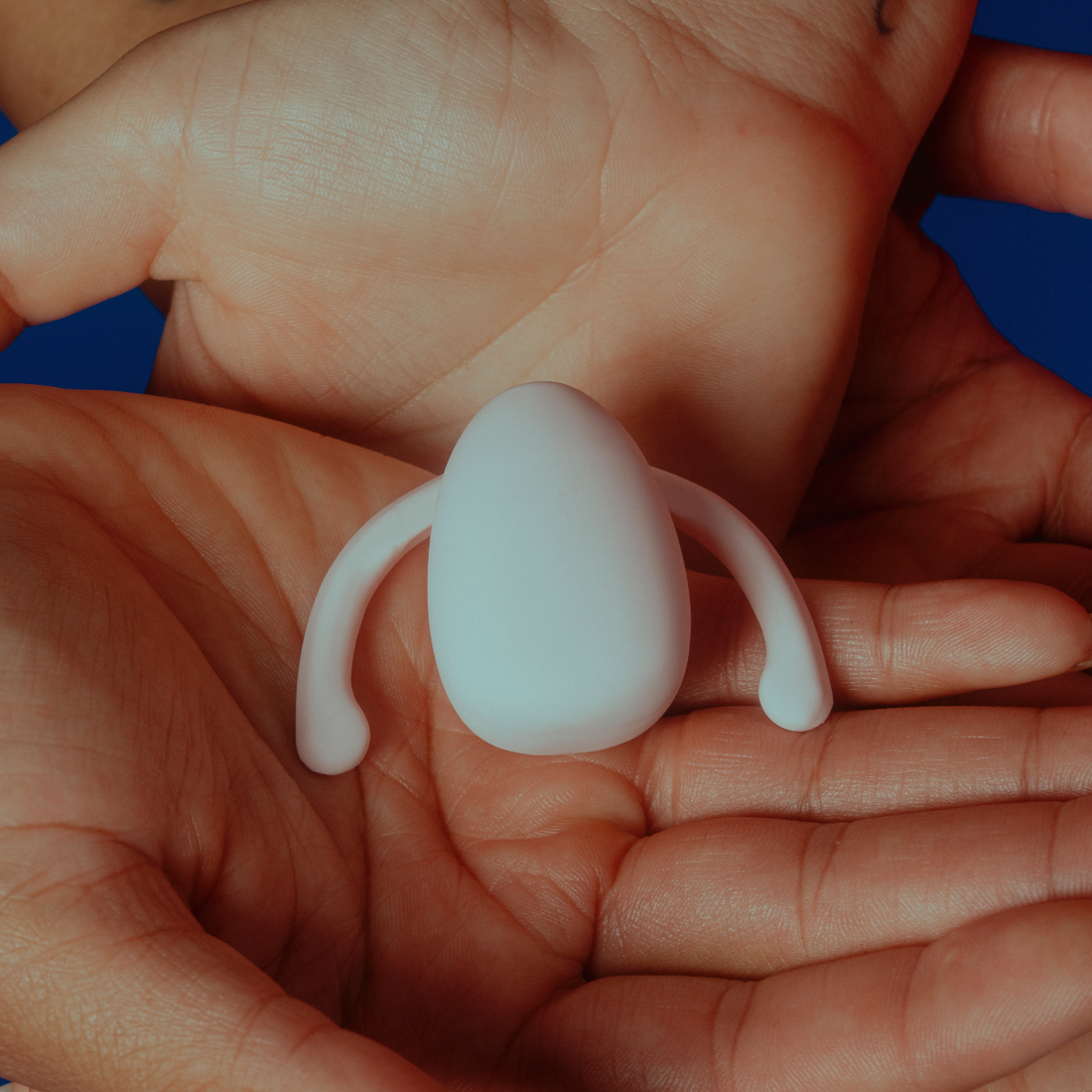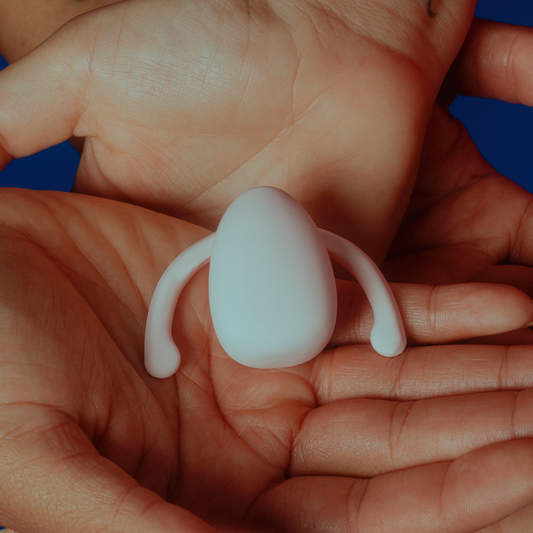Have you considered opening up your relationship or exploring polyamory? You’re not alone.
One Canadian study from 2019 found that one in five survey respondents had previously been in an open relationship, and 12% reported it as their preferred type of relationship.
While nonmonogamy has existed since the dawn of humanity, open relationships and polyamory are getting more media attention than ever before. So, you might find yourself wondering — “is an open relationship right for me?”
When I work with couples who are considering opening up their relationships, they often want to jump right into the deep end — to go out that night and find new sexual partners, or to join an app that day. This is often because we’re feeling a bit nervous and want to just “rip the bandage off.” But change can be nerve-wracking (and exciting), so it’s worth giving it some extra thought and intention.
Before we dive into the “I’m ready!” indicators, remember that there are tons of ways to practice nonmonogamy, and open relationships are just one of the ways.
If you’re considering shifting your relationship structure, it’s worth chatting with other people who are in (or have been in) open relationships, going to workshops, reading books, talking with your partner, and even setting up time to process with a therapist.
If you’ve been considering an open relationship, here are 6 signs you might be ready to take the plunge.
1. You’ve contemplated what you want from an open relationship.
Sometimes, we fall into the habit of saying “open relationship” when really, we mean “nonmonogamy.” Feeling lost in the definitions? Don’t stress about it too much.
Nonmonogamy is an umbrella term that describes lots of different relationship structures (sexual and romantic) and ways to practice them, whereas “open relationship” is one type of nonmongamous relationship. When someone says they’re in an “open relationship”, it often signals that they are able to seek out new sexual partners, but may not be able to form new romantic relationships.
That being said, everyone will define these terms differently, and some people won’t care about them at all. The important thing is to know what you’re looking for out of an open or nonmonogamous relationship (and why).
For example, you may be in a long-term relationship and looking to explore your sexuality outside of your current partnership. So, the two of you might decide to open the relationship to new sexual connections.
Or, perhaps you’ve always suspected that you were polyamorous, but have only been in monogamous relationships. You might decide to specifically explore nonmonogamy by dating into someone else’s existing open relationship.
Everyone has their own reasons for pursuing nonmonogamy, but the important thing is to figure out why you’re interested in trying it out. Here are some questions to ask yourself:
- What am I hoping to get out of an open relationship?
- What is my partner hoping to get out of an open relationship? (If currently partnered)
- Do I feel pressured to try an open relationship, or is this my own desire?
- Have I explored what an “open relationship” means to me personally? (And if you’re partnered, does your partner agree on those boundaries?)
2. You’ve explored how jealousy shows up for you.
To address the green-eyed monster in the room: Jealousy is a normal human emotion. It isn’t inherently bad, wrong, manipulative, prudish, or shameful. It’s just an emotion, and everyone experiences it from time to time — yes, even people practicing nonmonogamy.
So, it’s important to recognize how jealousy shows up for you (and what underlying feeling is causing the jealousy).
For example, do you get jealous when you’re friends hang out without you? Why do you get jealous in that situation? What does your brain tell you when you’re feeling that way? How do act when you feel jealous? What do you need in those moments?
Examining how jealousy shows up in your relationships can help you better understand how it could show up if you start practicing an open relationship. And, critically, it can teach you how to soothe your jealousy so that it doesn’t hop into the driver's seat.
Look, you’re not going to be a certified mindfulness master or anything — that’s way too high of an expectation to put on yourself — but you can engage your emotional world with curiosity and compassion, and that’s just as good.
3. You can set boundaries and ask for what you need.
Many of us really struggle with setting boundaries and advocating for our own needs, even in good, healthy relationships. We could unpack the reasons why it’s so hard for a while (helllloooooo, therapy!), but suffice it to say, if you struggle with setting boundaries, you’re not alone.
Setting boundaries and asking for what we need can be hard at first — but it’s essential.
That’s especially true when we’re talking about partnerships. We tend to believe that our partners should just know what we want and how we’re going to react in different situations, but no one is romantically or sexually psychic, and it isn’t fair to put that level of expectation on someone.
As Nedra Glover Tawwab, author of Set Boundaries, Find Peace puts it, “expecting people to read your mind will keep you dissatisfied in your relationships.”
Too often, we view boundaries as a hard and fast “no.” The reality is that a firm “no” is one type of boundary – and more often, boundaries are ways that we ask other people to respect us and show that they care about our wellbeing. When we look at boundaries that way, they suddenly seem much more manageable.
When we’re talking about opening up a relationship, setting boundaries might look like…
- Defining if there are any “off-limits” people
- Determining sexual health practices
- Setting up regularly-scheduled check-ins to see what’s working and what isn’t
- Discussing what you want to know (and don’t want to know) about other people’s sexual or romantic connections
You won’t get it perfectly right all the time, so instead, focus on learning about your communication style (and your partners’) and go from there!
4. You and your partner check in about the hard and fun stuff.
If you’re currently in a closed relationship that you’re considering opening, consider how you and your partner communicate.
Are you able to productively talk through conflict? When you feel frustrated or unappreciated, can you bring it up, or do you shove it down? When there’s something to celebrate, do you make time for joy?
Knowing about your overall landscape of communication (and how you’ve historically communicated in relationships) can help you understand if you’ll be able to address broken agreements, excitement, nervousness, sadness, and joy — all things that can come with newly open relationships!
If you take a closer look at your communication patterns and find that you’ve been tiptoeing around challenging topics (or avoiding them completely), seek outside support. Communication challenges are normal components of relationships, but that doesn’t mean you have to muddle through them alone.
5. You’re able to have sexual health conversations.
If you’re considering opening up a relationship, it might be because you want to have more (or different types of) sex! So, it’s worth thinking about what sexual health boundaries you want to set. Then, you have to actually talk about them with your partners and potential partners.
High school sex ed may have taught us that sexual health conversations are only about birth control and condoms, but there’s more to it than that.
Conversations around sexual health and wellbeing might include…
- Talking about your desires and fantasies
- Communicating your boundaries
- Acknowledging and affirming other people’s boundaries
- Identifying what brings you pleasure (and telling your partners about it)
- Creating gender-affirming sexual experiences
- Unpacking experiences that you didn’t enjoy
And yeah, birth control and STI prevention and disclosure!
Sexual wellbeing is about so much more than our genitals, so if you’re feeling overwhelmed, here are some questions to start your self-exploration journey:
- How do I feel when I imagine talking about sexual health?
- How do I express judgment?
- What sexual health practices are important to me?
- Do I have a chronic STI that I need to disclose?
- How will I communicate if my sexual wellness status or needs has changed?
Think of sexual health conversations as one type of boundary and desire conversation — because they are — and you deserve for your health and wellbeing to be supported.
6. You know the value of balancing the spontaneous with the scheduled.
Have you ever heard the joke about polyamorous folks and Google calendars? It’s less a joke and more a lighthearted take on reality — balancing multiple sexual and romantic relationships means being intentional, and that means embracing a schedule.
If you’re opening your relationship by seeking out one-time sexual experiences, you might not rely very heavily on a schedule. But if you’re planning on adding more people to your relationship in an ongoing way, then it’s important to be intentional about how you spend time together.
If you’ve experienced new relationship energy, then you know how easy it is to focus all of your time and energy on your newest, most exciting connection. But your other relationships — and your relationship with yourself — deserve time, too.
When it comes to relationships, many of us were taught that spontaneous equals better, whether that comes to meet-cutes or sex. The reality is that both spontaneity and intentionally scheduled time have value! Both can create meaningful experiences, both can be fun, and both offer opportunities for connection.
And if you’re thinking about expanding the number of romantic or sexual partnerships in your life, then you’re probably going to have to embrace the G-Cal a little bit more than you currently do.
So, if you’re someone who heavily prioritizes spontaneity, practice scheduling out connection time and see how it feels! Scheduled sex or dates don’t have to be restrictive. Instead, it’s an opportunity to say “hey, this is important to me, so I’m going to make time for it” and that’s a feeling that makes most of us a little weak in the knees.
Ultimately, the only person who knows if you’re ready for an open relationship is you, so use these guideposts for some self-exploration. However your relationships shift, we wish you delightful and pleasurable connections and exploration!





















































2 comments
great content
https://www.facebook.com/profile.php?id=61574616612705
href=" https://pharmacy4us.com/product/magic-beanz-mdma-pills/"rel"dofollow">Magic Beanz MDMA pills
href=" https://pharmacy4us.com/product/nl-pills-white-mdma/"rel"dofollow">NL pills white MDMA
href=" https://pharmacy4us.com/product/party-smart-pill/"rel"dofollow">Mitsubaihi Pink/Yellow Barcelona Netflix 230mg
href=" https://pharmacy4us.com/product/xtc-pills/ "rel"dofollow">LIDL XTC tabs (200 – 220mg)
href=" https://pharmacy4us.com/product/oxycontin-80mg/"rel"dofollow">OxyContin 80mg
href=" https://pharmacy4us.com/product/pills-for-party/"rel"dofollow">Angry Birds 160mg
href=" https://pharmacy4us.com/product/party-pills/ "rel"dofollow">FUCK YOU AND HAVE A NICE DAY
href=" https://pharmacy4us.com/product/tramadol-200mg/ "rel"dofollow">Tramadol 200mg
href=" https://pharmacy4us.com/product/pregabalin-dr-re…mg-hard-capsules"rel"dofollow">Pregabalin Dr. Reddys 300mg Hard Capsules
href=" https://pharmacy4us.com/product/mirtazapine-45mg/ "rel"dofollow">Mirtazapine 45mg
href=" https://pharmacy4us.com/product/pregabalin-300mg…sules-teva-brand/"rel"dofollow">Pregabalin 300mg Hard Capsules (Teva Brand)
href=" https://pharmacy4us.com/product/pregabalin-milph…sules-hard-300mg/"rel"dofollow">Pregabalin Milpharm Capsules, Hard 300mg
href=" https://pharmacy4us.com/product/tramadol-hydrochloride-100mg/"rel"dofollow">Tramadol Hydrochloride 100mg
href=" https://pharmacy4us.com/product/pain-o-soma-350mg/"rel"dofollow">SOMA PAIN 30/350 MG
href=" https://pharmacy4us.com/product/tapentadol-100mg/"rel"dofollow">Tapentadol 100mg
href=" https://pharmacy4us.com/product/tramadol-100mg/ "rel"dofollow">Tramadol 100mg
href=" https://pharmacy4us.com/product/codeine-phosphate-30mg/ "rel"dofollow">Codeine Phosphate 30mg
href=" https://pharmacy4us.com/product/tramadol-50mg/"rel"dofollow">Tramadol 50mg
href=" https://pharmacy4us.com/product/co-codamol-30-500mg-tablets/"rel"dofollow">Co-codamol 30/500mg Tablets
href=" https://pharmacy4us.com/product/dihydrocodeine-30mg/"rel"dofollow">Dihydrocodeine 30mg
href=" https://pharmacy4us.com/product/pregabalin-300mg-nervigesic/"rel"dofollow">Pregabalin 300mg (Nervigesic)
href=" https://pharmacy4us.com/product/diazepam-5mg/ "rel"dofollow">Diazepam 5mg
href=" https://pharmacy4us.com/product/lorazepam-1mg/"rel"dofollow">Lorazepam 1MG
href=“https://pharmacy4us.com/product/etizolam-tablet-1mg/”rel"dofollow">Etizolam Tablet 1mg
href=" https://pharmacy4us.com/product/alprazolam-xanax-1mg-rlam/ "rel"dofollow">Alprazolam Xanax 1mg (Rlam)
href=" https://pharmacy4us.com/product/alprazolam-xanax-1mg-rlam/"rel"dofollow">Alprazolam Xanax 1mg (Rlam)
href=" https://pharmacy4us.com/product/lorazepam-2mg-tablets-pfizer/ "rel"dofollow">Lorazepam 2MG Tablets (Pfizer)
href=" https://pharmacy4us.com/product/diazepam-10mg-tablets-elikem/ "rel"dofollow">Diazepam 10mg Tablets – Elikem
href=" https://pharmacy4us.com/product/diazepam-5mg-sedil/"rel"dofollow">Diazepam 5mg (Sedil )
href=“https://pharmacy4us.com/product/zopiclone-7-5mg/”rel"dofollow">Zopiclone 7.5mg (Blue)
href=" https://pharmacy4us.com/product/bensedin-diazepam-10mg-tablets/"rel"dofollow">Bensedin / Diazepam 10mg tablets
href=" https://pharmacy4us.com/product/valium-diazepam-10mg/"rel"dofollow">Valium Diazepam 10mg
href=" https://pharmacy4us.com/product/diazepam-10mg-uk-brand/"rel"dofollow">Diazepam 10mg – UK Brand
href=" https://pharmacy4us.com/product/drug-temazepam/ "rel"dofollow">Temazepam 20mg
href=“https://pharmacy4us.com/product/zopiclone-7-5mg-tablets-eu/”rel"dofollow">Zopiclone 7.5mg Tablets (EU)
href=" https://pharmacy4us.com/product/zolpidem-tartrate-10mg-belbien/ "rel"dofollow">Zolpidem Tartrate 10mg (Belbien )
href=“https://pharmacy4us.com/product/modafinil-200-mg/”rel"dofollow">MODAFINIL 200 mg
href=“https://pharmacy4us.com/product/zopiclone-10mg/”rel"dofollow">Zopiclone 10mg
href=" https://pharmacy4us.com/product/zopiclone-7-5mg-tablets"rel"dofollow">zopiclone-7-5mg-tablets
href=“https://luxuryloudpackz.com/product/1g-vape-cartridge/ ”rel"dofollow">Spaced out 1G Vapes
href=" https://luxuryloudpackz.com/product/1g-vape-cartridge/"rel"dofollow">Spaced out 1G Vapes
href=" https://luxuryloudpackz.com/product/2g-disposable-thc-vape/ "rel"dofollow">BESOS 2ML
href=“https://luxuryloudpackz.com/product/tropical-cherry-weed-strain/”rel"dofollow">Pink Zushi Tropical Zoap
href="https://luxuryloudpackz.com/product/moonrock-weed/ "rel"dofollow">Kaw Moonrock
href="https://luxuryloudpackz.com/product/moonrocks-weed/ "rel"dofollow">Premium Cali Moonrockz
href=“https://luxuryloudpackz.com/product/moonrock-pre-roll/”rel"dofollow">Cali moonrock pre rolls 2gram
href=“https://luxuryloudpackz.com/product/torch-1ml-live-r…n-liquid-diamond/”rel"dofollow">Torch 1Ml Live Resin + Liquid Diamond
href=" https://luxuryloudpackz.com/product/2g-weed-pen/ "rel"dofollow">2ML 10/10 boys
href=“https://luxuryloudpackz.com/product/dual-chamber-disposable-vape/”rel"dofollow">ELITES SWITCH – 1G Distillate Dual Chamber Disposable Vapes
href=" https://luxuryloudpackz.com/product/cookies-disposable-vape-2g/ "rel"dofollow">PACKMAN Version 3
href=“https://luxuryloudpackz.com/product/thc-syringe/ ”rel"dofollow">Wizard of terps 1ML THC syringes
href=" https://luxuryloudpackz.com/product/pretty-dope-vape-review/"rel"dofollow">DOPE 1ML VAPES
href=“https://luxuryloudpackz.com/product/ghost-disposable-vape-2g/”rel"dofollow">2ML TSYO VAPES
href=" https://luxuryloudpackz.com/product/ape-live-resin-disposables/ "rel"dofollow">Jeeter Juice 1ML Disposable Live Resin
href=“https://luxuryloudpackz.com/product/most-expensive-disposable-vape/”rel"dofollow">EXPENSIVE SHIT 1ML VAPES
href=" https://luxuryloudpackz.com/product/cali-thc-disposable-vape/ "rel"dofollow">CALI COMPANY 1ML VAPES
href=" https://luxuryloudpackz.com/product/select-king-louis-xiii-vape-1g/"rel"dofollow">Backpackboyz 1G Vapes
href=“https://luxuryloudpackz.com/product/thc-p-vape/”rel"dofollow">NFUSED 1ML BADDER + THC-P vapes
href=" https://luxuryloudpackz.com/product/sluggers-2-gram"rel"dofollow">2 Gram Sluggers
href=" https://luxuryloudpackz.com/product/fryd-2g/"rel"dofollow">FRYD 2G
href=" https://luxuryloudpackz.com/product/hitting-blinkers-2ml-2000mg/"rel"dofollow">HITTING BLINKERS 2ML 2000MG
href=" https://luxuryloudpackz.com/product/2g-disposable-vape/"rel"dofollow">ZOOR 3ML 3000MG
href=“https://luxuryloudpackz.com/product/liquid-diamond-disposable-vape/ ”rel"dofollow">Hidden hills 2g Disposable vape Liquid Diamonds
href=" https://luxuryloudpackz.com/product/2-gram-sluggers-…e-resin-diamonds/"rel"dofollow">2 Gram Sluggers Hit Disposable Live Resin Diamonds
href=" https://luxuryloudpackz.com/product/strains-jungle-cake/"rel"dofollow">STRAINS Jungle Cake
href=" https://luxuryloudpackz.com/product/strains-berry-pancakes/"rel"dofollow">Strains Berry Pancakes
href=" https://luxuryloudpackz.com/product/frost-fairy-ice/"rel"dofollow">Frost Fairy Ice
href=" https://luxuryloudpackz.com/product/strawberry-shortcake/ "rel"dofollow">Strawberry Shortcake
href=" https://luxuryloudpackz.com/product/caramel-apple-gelato/"rel"dofollow">CARAMEL APPLE GELATO
href=" https://luxuryloudpackz.com/product/lemon-cherry-gelato/"rel"dofollow">LEMON CHERRY GELATO
href=" https://luxuryloudpackz.com/product/purple-tesla-mediums/"rel"dofollow">PURPLE TESLA MEDIUMS